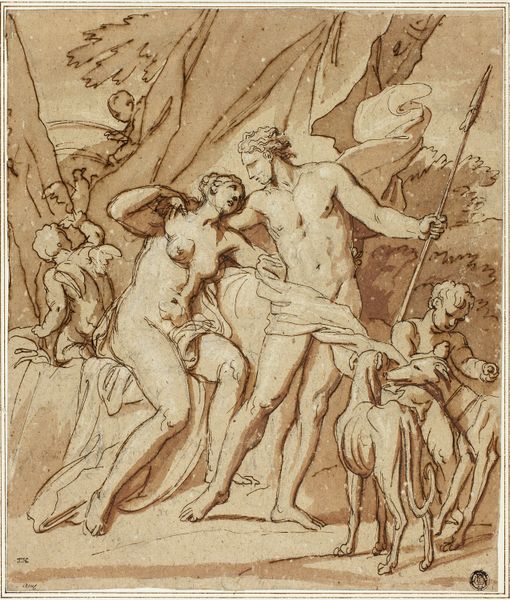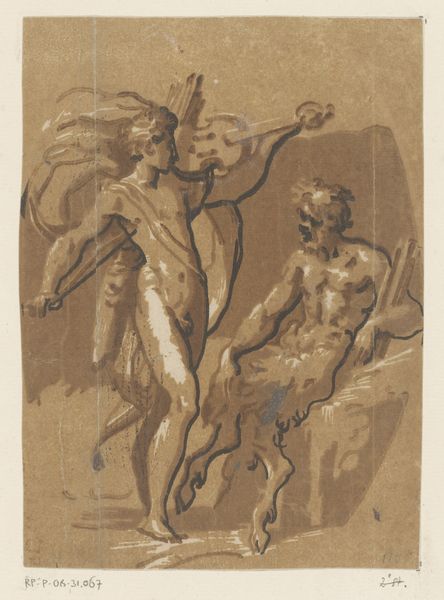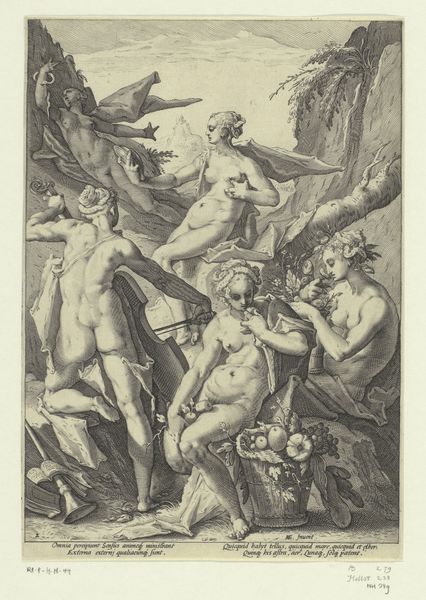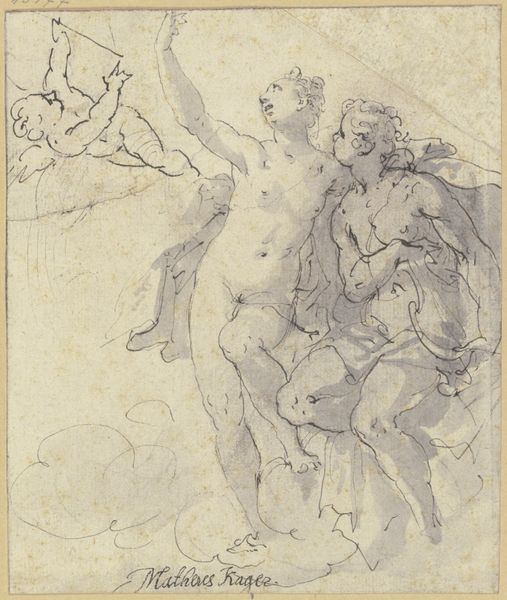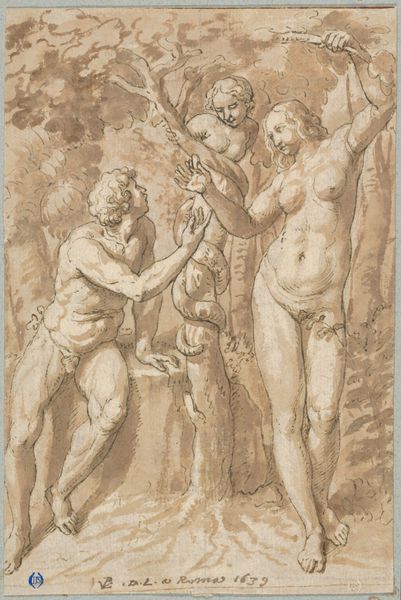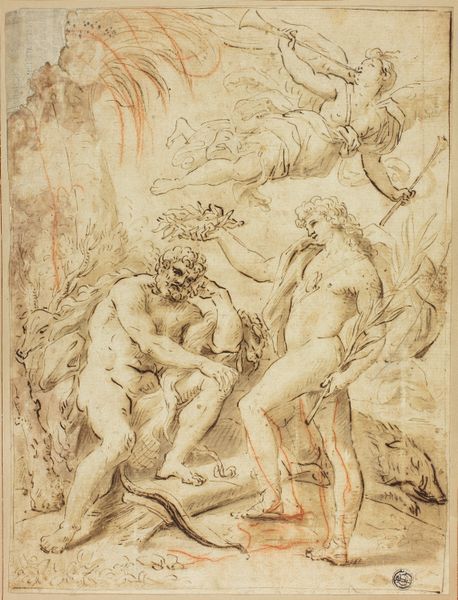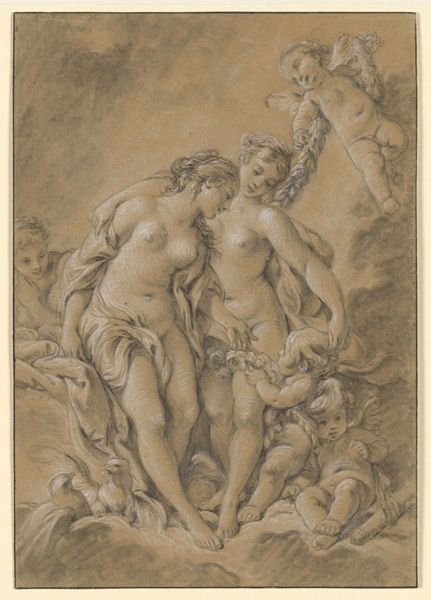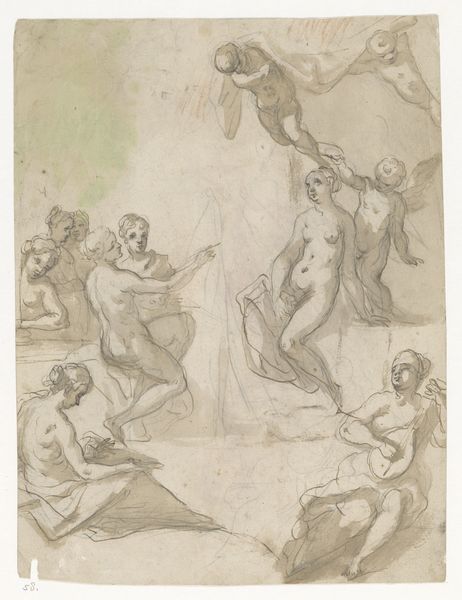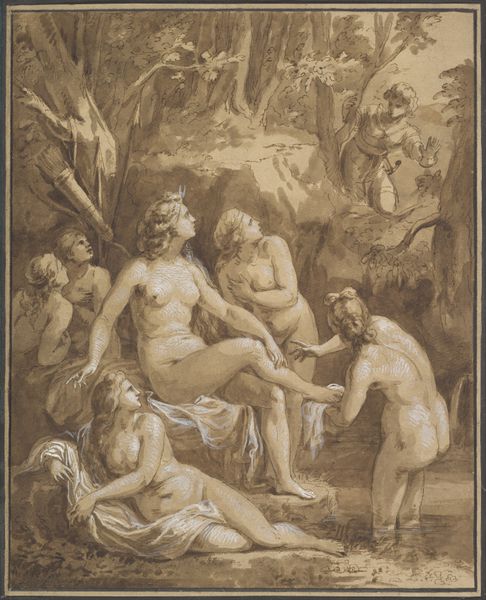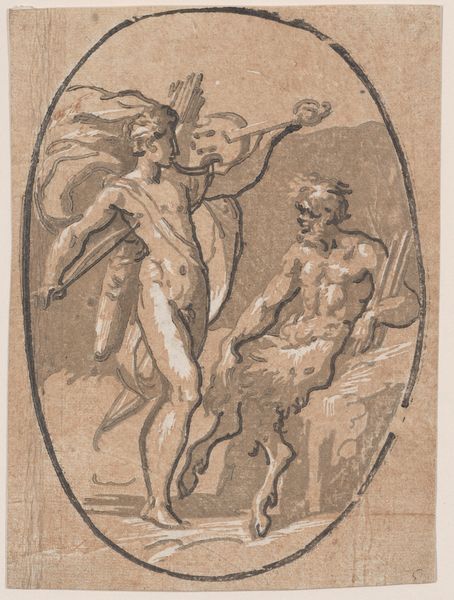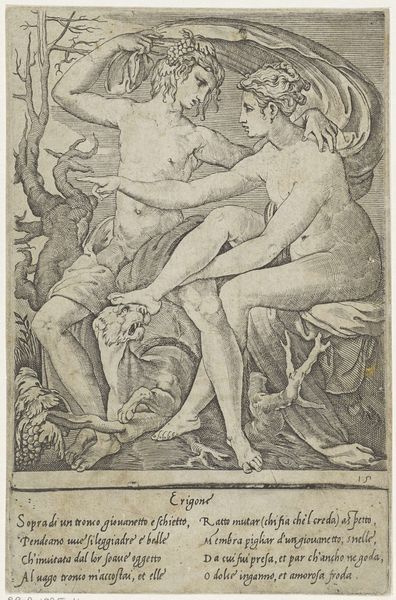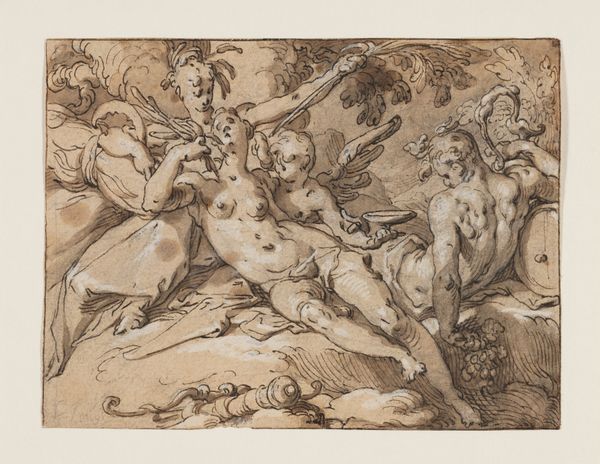
drawing, print, paper, ink, pen, charcoal
#
drawing
#
allegory
# print
#
charcoal drawing
#
mannerism
#
figuration
#
paper
#
11_renaissance
#
ink
#
ink drawing experimentation
#
pen
#
charcoal
#
history-painting
#
nude
Dimensions: 263 × 207 mm
Copyright: Public Domain
Curator: What a powerful drawing. Bloemaert’s "The Three Fates," likely created sometime between 1590 and 1600, uses pen, ink, and charcoal on paper to present this striking allegorical scene. Editor: It feels unfinished, doesn’t it? Raw and a bit haunting, almost as if Bloemaert ripped it straight from a nightmare. The line work, especially, has a frantic quality to it. I can almost feel the urgency in his hand as he rendered this. Curator: Well, its creation aligns with the Mannerist style, where artists often embraced elongated figures and dramatic compositions. The Fates themselves—Clotho, Lachesis, and Atropos—are usually depicted determining the course of human life. They spin, measure, and cut the thread of life. Editor: The drama is certainly amped up! Look how sharply the light hits their bodies and their faces; and the tools, especially the scissors that one of the Fates wields. It has an unnerving effect, all playing out in front of a bizarre and barren landscape. It’s a narrative of both power and fragility. Curator: And Bloemaert’s use of varying line weights certainly heightens that dramatic effect, pulling the eye towards certain areas. Notice also the contrast between the delicate rendering of their skin and the rougher, almost chaotic background. I suspect it mirrors the chaos they control. It serves to underline the inevitability of fate. Editor: Perhaps the artist felt compelled by the ever present weight of these inescapable forces, in a society where one’s destiny was heavily determined at birth? He used the graphic precision of ink and charcoal to highlight that their actions determine human lifespan. Curator: Precisely. Remember the societal constructs in Bloemaert's time. Think of guilds and social hierarchy shaping identities. Artists like him used allegory as visual shorthand for commentary. "The Three Fates" really engages with deep, cultural anxieties regarding control, life's trajectory, and, let’s face it, death. Editor: Knowing this only deepens my engagement with the piece, making me want to unravel more about Bloemaert, fate, and what it says about the artistic anxieties during his era. The drawing leaves a lingering echo, even after you walk away.
Comments
No comments
Be the first to comment and join the conversation on the ultimate creative platform.
